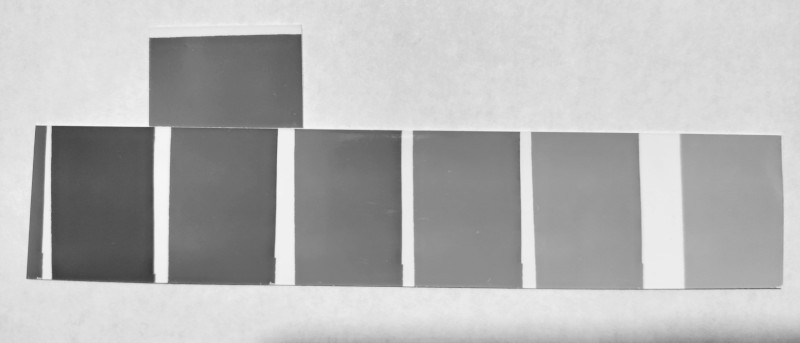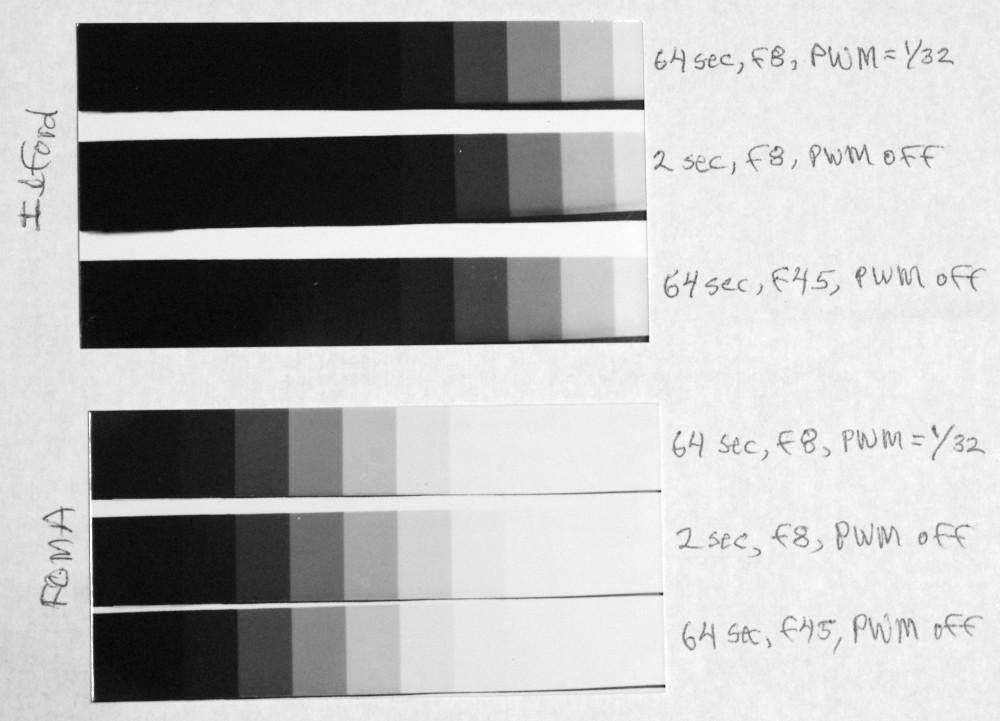albada
Subscriber
In his book, Way Beyond Monochrome, Ralph Lambrecht states that his testing shows that papers exhibit reciprocity failure, ranging from 1/12 to 1/25 stop per doubling of exposure time. I was curious about Ilford MGRC V Deluxe, so I performed an experiment: I photographed a patch for 64 seconds (the top patch in the photo below), and six more patches at 32 times the light intensity starting at 2 seconds, and going shorter. That's a 5-stop gain in intensity coupled with a 5-stop loss of time, so the leftmost patch in the second row below should be identical to the upper patch that got the long exposure.
It isn't. There was a 0.1 stop density-difference, because the lower patches are spaced 0.1 stops apart (f-stop timing).
Thus, Ilford MGRC Deluxe loses 0.1 stops for every 5 time-doublings, which is 1/50th stop per doubling. This is a good result that exceeds the best that Lambrecht got with his papers. I see why Ilford tells us to not worry about reciprocity failure. You would only need to worry about it if exposing for 8x or more, which I doubt anyone would do without creating a new test strip.
I changed intensity by 32x using a LED-head that is PWM'd -- pulse-width modulated. I don't know whether using PWM'd bright light yields the same results as with constant-intensity dim light, but with a loss of only 1/50 stop per stop, I'm happy.
Mark Overton
IlfordReciproc5Stops
- albada
- 1
Ilford MGRC V Deluxe exhibits a little reciprocity error. Upper patch was exposed for 32 times...
Thus, Ilford MGRC Deluxe loses 0.1 stops for every 5 time-doublings, which is 1/50th stop per doubling. This is a good result that exceeds the best that Lambrecht got with his papers. I see why Ilford tells us to not worry about reciprocity failure. You would only need to worry about it if exposing for 8x or more, which I doubt anyone would do without creating a new test strip.
I changed intensity by 32x using a LED-head that is PWM'd -- pulse-width modulated. I don't know whether using PWM'd bright light yields the same results as with constant-intensity dim light, but with a loss of only 1/50 stop per stop, I'm happy.
Mark Overton







